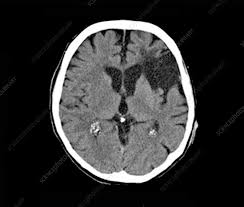Stroke Deaths Rising After 40 Year Decline
 An analysis by Rutgers researchers found both a dramatic decline and the potential for an important resurgence in US stroke deaths from 1975 to 2019.
An analysis by Rutgers researchers found both a dramatic decline and the potential for an important resurgence in US stroke deaths from 1975 to 2019.
Stroke mortality (per 100,0000) plummeted from 88 to 31 for women and 112 to 39 for men between 1975 and 2019 in the United States. Total stroke deaths fell despite the rise in age-adjusted risk because stroke rates skyrocket as people get older. A 10% reduction in the fatality rate for 75-year-olds would more than offset a doubling of the fatality rate among 35-year-olds because strokes are 100 times more common in 75-year-olds.
However, barring further improvements in stroke prevention or treatment, the most recent figures demonstrate that total stroke fatalities will rise as millennials age. Age-adjusted stroke deaths per 100,000 people bottomed out in 2014 and climbed again during the last five years of the study period.
“Starting around 1960, the later you were born, the higher your risk of suffering a fatal ischemic stroke at any particular age,” said Cande Ananth, PhD, MPH, chief of the Division of Epidemiology and Biostatistics in the Department of Obstetrics, Gynecology, and Reproductive Sciences Rutgers Robert Wood Johnson Medical School, and lead author of the study. “This study didn’t identify a cause for this trend, but other research suggests the main culprits are increasing rates of obesity and diabetes.”
The analysis used a comprehensive death-certificate database to identify virtually every adult under the age of 85 who died from a stroke during the 44 years – 4,332,220 deaths in all.
It was the first stroke-death analysis to divide patients by their year of birth (cohort) and the first to identify the steady rise in age-adjusted ischemic stroke risk from the late 1950s to the early 1990s.
This “age-period-cohort analysis,” which further divided patients by their age at death, also allowed the study team to make two other novel insights:
- Stroke fatality rates have fallen more for ischemic strokes, which occur when blood vessels to the brain are blocked, than hemorrhagic strokes, which occur when blood vessels leak or burst. The ischemic stroke fatality rate fell roughly 80% over the study period, while the hemorrhagic stroke fatality rate fell roughly 65%.
- The disparity between male and female stroke fatality rates diminishes as patient age increase. At age 55, men are more than twice as likely as women to suffer a fatal stroke, but the disparity in the rates of fatal stroke is virtually identical at age 85.
According to Dr Ananth, “After nearly four decades of declining stroke-related mortality, the risk appears to be increasing in the United States. Our research underscores the need for novel strategies to combat this alarming trend.”
Related Articles
Citation
Stroke Deaths Rising After 40 Year Decline. Appl Radiol.
January 9, 2023